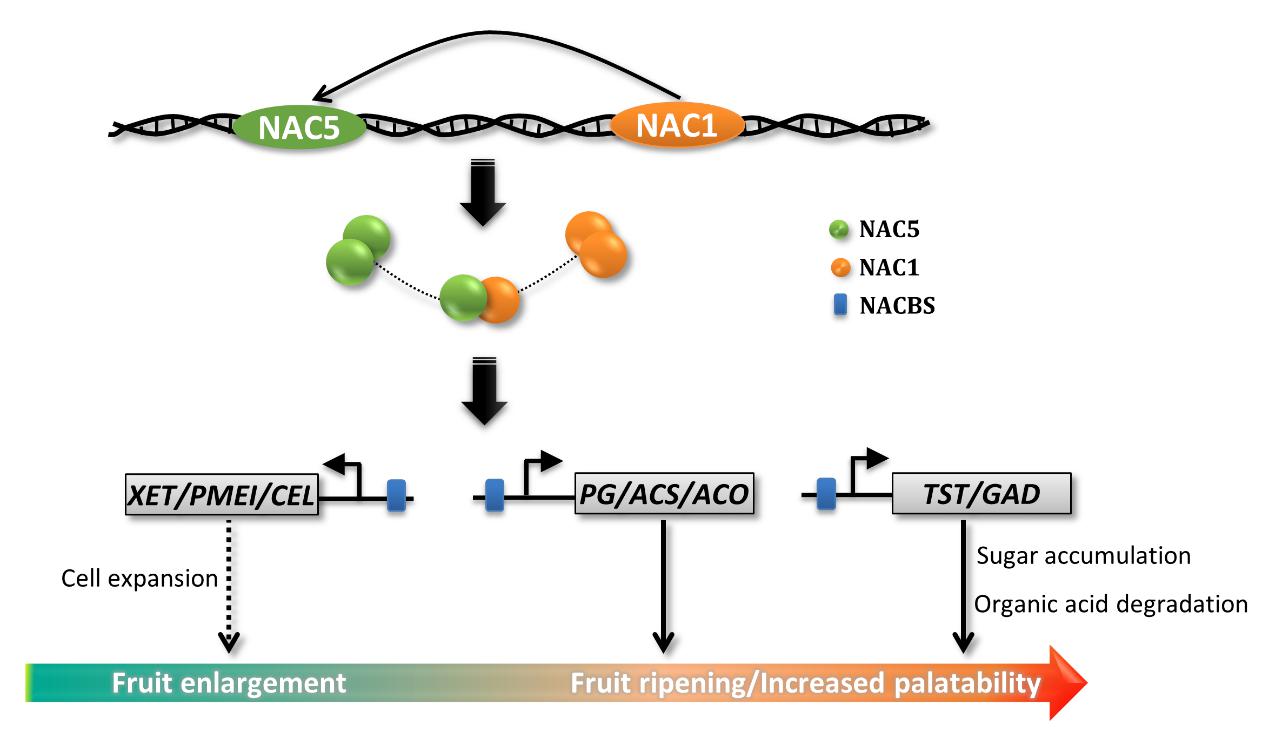Fruit maturity date (MD) is critical to the market supply period and fruit flavor. It is affected by fruit setting date and the length of fruit enlargement and ripening. A better understanding of fruit MD regulation provides guidance for fruits that tend to deteriorate rapidly after harvest, such as peaches.
In a study published in the New Phytologist, researchers from the Wuhan Botanical Garden (WBG) of the Chinese Academy of Sciences (CAS) showed that two adjacent NAM-ATAF1/2-CUC2 (NAC) transcription factors (TFs), namely PpNAC1 and PpNAC5, both function as ripening enhancers, with the former having a stronger ripening acceleration effect. It provides insight into understanding how the ripening process makes fruit more delicious.
The proteins (PpNAC1 and PpNAC5) were found to promote fruit enlargement and ripening by activating genes associated with cell elongation, cell wall degradation and ethylene biosynthesis. In addition, they can improve fruit flavor by inducing the transcription of genes related to sugar accumulation and organic acid degradation.
Interestingly, both PpNAC1 and PpNAC5 orthologs were found in fruit-producing plants, but not in fruitless plants, suggesting their critical role in fruit development.
This work was supported by the Strategic Priority Research Program of CAS, the National Natural Science Foundation of China, and the China Agriculture Research System, etc.







